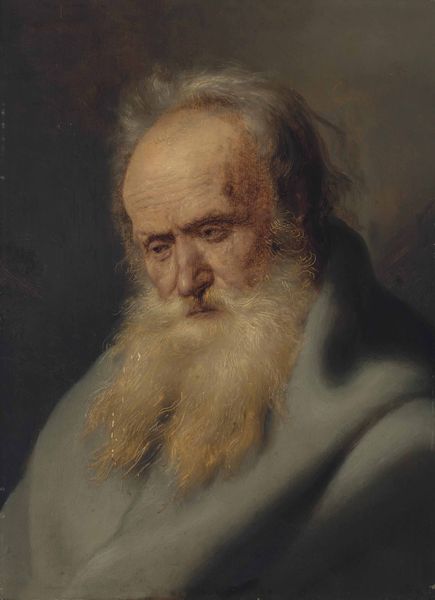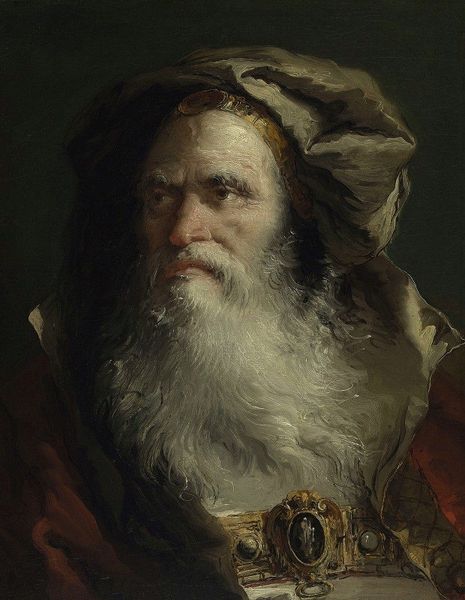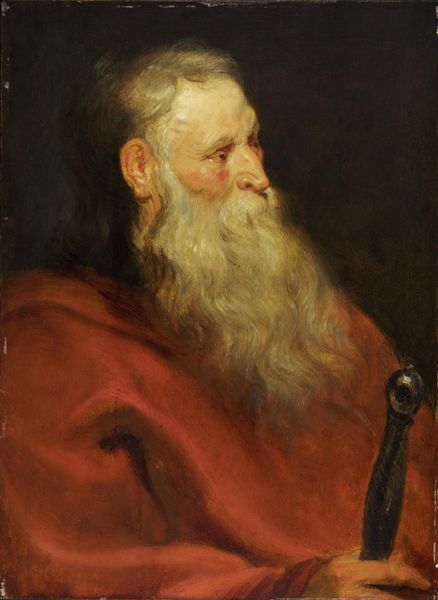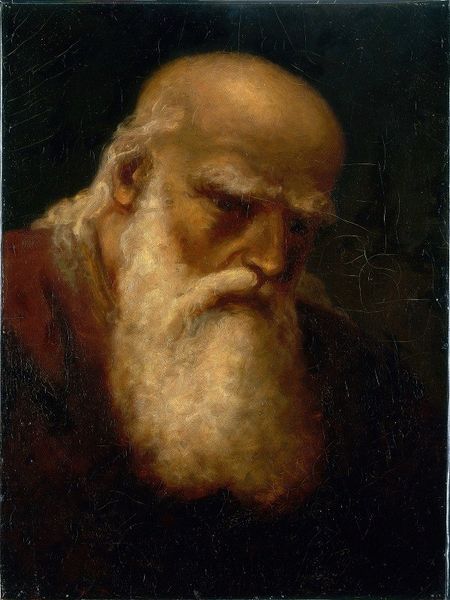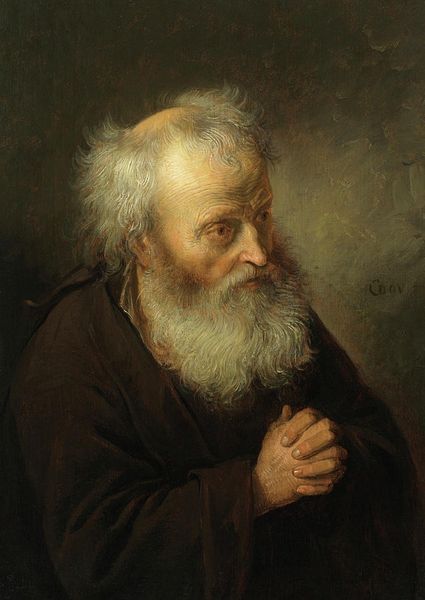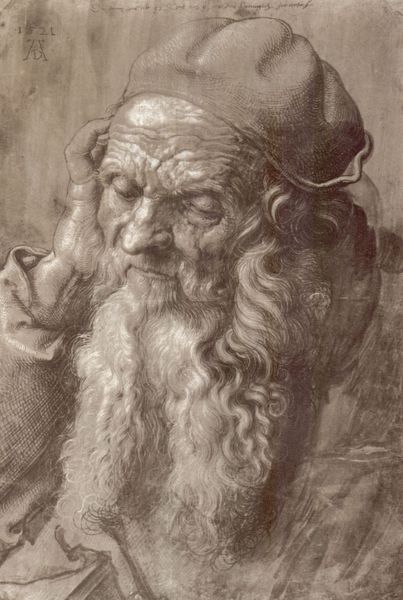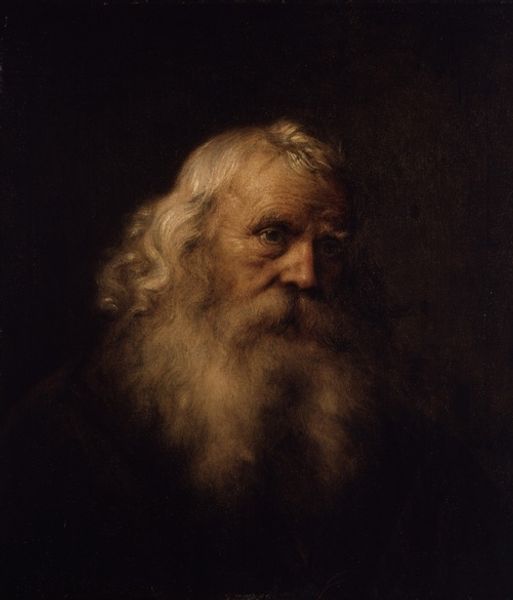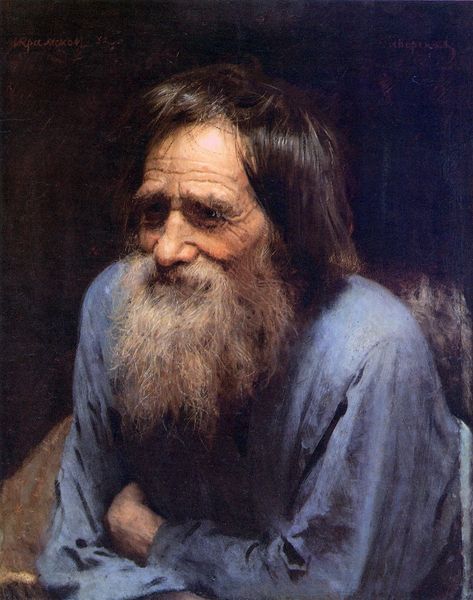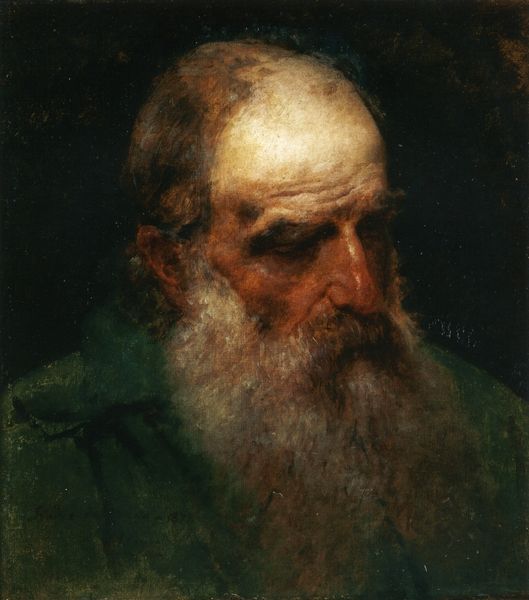
Copyright: Public Domain: Artvee
Editor: This is Jan Matejko's "Head of an Old Man with a Grey Beard," painted in 1858. It's an oil painting and the somber colors create quite a melancholic mood. What can you tell me about it? Curator: I'm immediately drawn to the materiality of the beard itself. Look at how Matejko uses oil paint to construct it, layer upon layer. Isn’t the treatment of the beard – the most significant material in the piece – fascinating in the context of the burgeoning industrial revolution? He elevates this 'everyman,' depicting what is usually unseen, labor, within a heroic framework. Editor: I see what you mean. Instead of an idealized hero, the focus is on the textured reality of his aging. Curator: Exactly. How might Matejko be commenting on the changing social fabric? Perhaps he's subtly challenging the established academic style, directing the focus away from solely the elite. The materiality and application, I’d argue, embodies this. What do you make of the darkness surrounding the head? Editor: It seems to emphasize the solitude, making the man almost disconnected from any broader setting. It brings an intimate, almost voyeuristic feel. Do you think it connects to something about portraiture at the time? Curator: Absolutely, consider who was commissioning portraits at the time, predominantly upper classes who sought ways to distinguish themselves. Contrast this image, which seemingly disrupts the commodity fetish, making this working-class head…a hero. The artist elevates what it means to capture one’s image for historical posterity. Editor: That’s given me a completely new way of understanding it! The painting, beyond being just a portrait, becomes a commentary on society itself. Curator: Indeed. It forces us to examine the raw materials of both the artwork and society. It allows us to challenge the traditional boundaries between high art and depictions of manual labor.
Comments
No comments
Be the first to comment and join the conversation on the ultimate creative platform.
